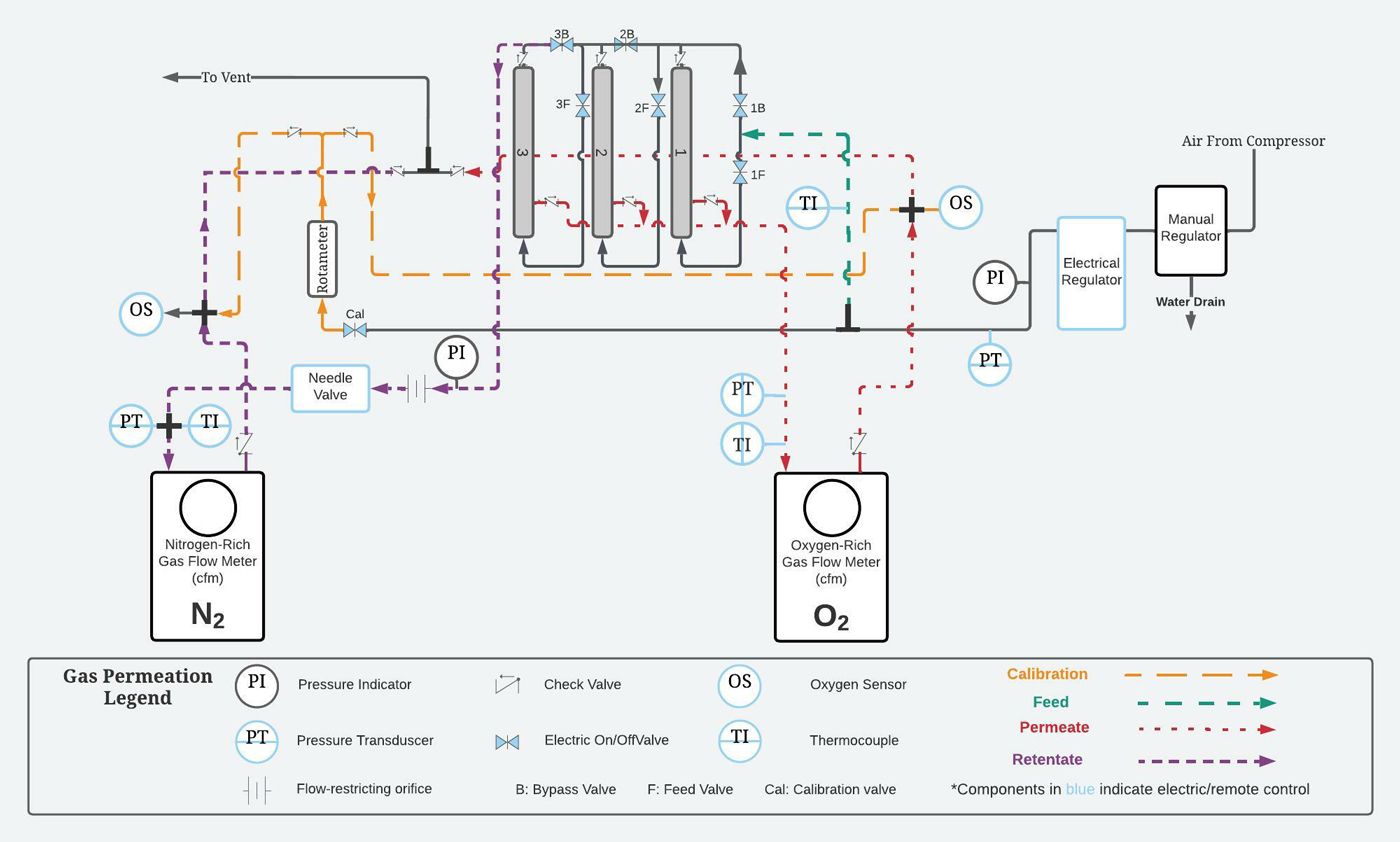Manhattan University Offers Chemical Engineering Students a Control Room Experience with MATLAB
“Using MATLAB, chemical engineering students got control room experience while remotely controlling and acquiring data from their gas permeation experiment.”
Key Outcomes
- Chemical engineering students developed in-demand industry skills
- Control room setup enabled students to experience working in different engineering roles
- Remote lab provides a template for other educators to conduct online labs

Schematic of the laboratory equipment controlled by the MATLAB app to conduct gas permeation experiments at Manhattan University. The physical setup was assembled by Jason Risolo (Chemical Engineering B.S. ’20, M.S. ’22) and the schematic was prepared by Emily Oldag (Chemical Engineering B.S. ’21, M.S. ’22).
Labs are an essential way for chemical engineering students to develop in-demand industry skills. At Manhattan University, Dr. Aravind Suresh incorporated remote control to a physical chemical engineering lab, allowing users to emulate working in a real plant. Using MATLAB® App Designer, he designed a custom app that allows students to control lab equipment while gaining hands-on experience.
Using this app, students remotely access a gas permeation experiment designed to separate air into oxygen-rich and nitrogen-rich streams. One student is stationed in the “field” and the rest of the group are in a “control room” running the experiment. Students rotate during the experiment to experience both field engineer and control room engineer roles.
The app is programmed to communicate directly with most of the equipment through a Programmable Logic Controller (PLC) using Modbus® protocol and Industrial Communication Toolbox™. Data acquired through the app—including temperatures, pressures, valve positions (on/off as well as % open), and oxygen concentrations—are displayed in real time in a table in the app and simultaneously logged in an Excel file. The oxygen concentrations are also displayed graphically, while all other calculations such as molar flowrates, material balance, N2 selectivity, and N2 recovery are performed by the students using the raw data logged in the Excel® file.
In another endeavor using MATLAB App Designer, Dr. Suresh asked the seniors taking the chemical engineering laboratory course in spring 2023 to create apps for a flow-through pipes experiment and present them at the end of the semester. Selected apps will be shared publicly on File Exchange to enable other instructors and students to experience the physical experiment through virtual apps.